BuySellBA
Administrator
Housing construction in CABA: Why inequality between the north and the south has increased in the last 5 years - Infobae

Source:
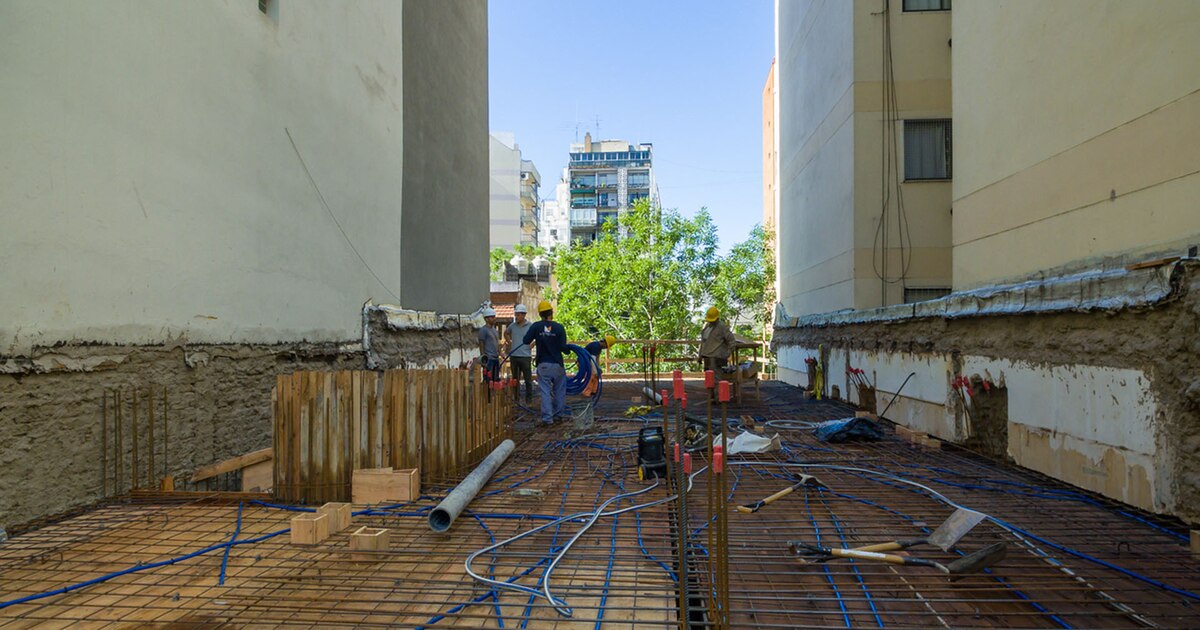
Construcción de viviendas en CABA: por qué en los últimos 5 años aumentó la desigualdad entre el norte y el sur
Un análisis privado confirmó fuerte concentración en un lado y desinversión en el otro. Se esperan nuevos cambios al Código Urbanístico, que ya reconocía la necesidad de equilibrar la ciudad
July 29, 2024
A private analysis confirmed strong concentration on one side and disinvestment on the other. New changes are expected to the Urban Planning Code, which already recognized the need to balance the city.
By Jose Luis Cieri
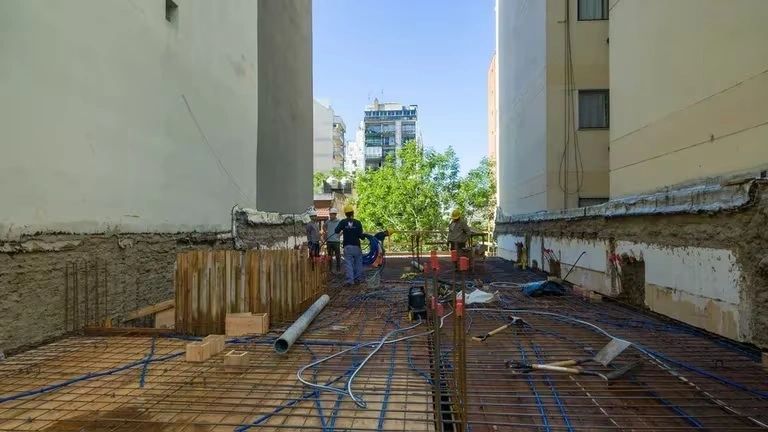
A private study confirmed the uneven distribution of permits and square meters built, which shows a tendency towards the concentration of real estate development in the most prosperous areas of CABA, such as the northern axis.
A private report based on statistical data from the Buenos Aires City Government was able to determine that in the last 5 years the inequality in housing construction between the North and South axes of the city of Buenos Aires has increased. The data on construction permits from the Buenos Aires City Government reflect a strong concentration in the North axis of the City and disinvestment in the Southern Communes, which resulted in an increase in the real estate disparity.
This is nothing new in terms of distribution, but the data show that inequality also increased according to the permits granted under the new Urban Planning Code, which should soon be discussed in the Buenos Aires Legislature, because it must be modified every four years. The Code itself already expressed the need to balance the city.
Among the most eloquent data released by the Tejido Urbano Foundation, which carried out the analysis: of the 4,201 new constructions approved in the last five years, only 191 (4.8%) are located in the southern communes (communes 4 and 8). In the same period, 1,574 building permits were approved in the northern communes.
The average size of each project in the north is also higher, at around 2,976 square metres, compared to an average of 2,296 m2 in the south. In other words, the projects in the north are not only much more numerous, but they are also larger and, consequently, have a greater urban impact.
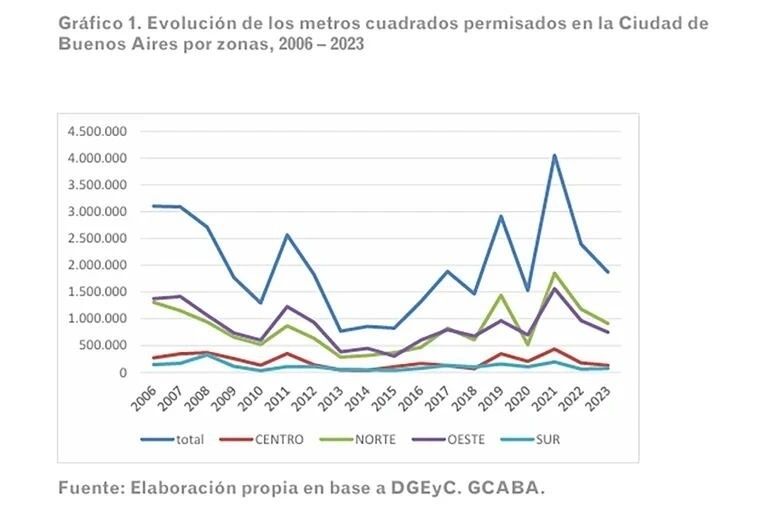
Source: Urban Fabric
Fernando Álvarez de Celis , executive director of Tejido Urbano, told Infobae that inequality in construction in CABA is not a recent phenomenon. “Historically, much more was built in the north than in the south. Growth in the north began during the pandemic in the mid-19th century and continues to this day. The groups with the highest purchasing power were located in Barrio Norte and Recoleta and from there construction expanded through those neighborhoods until reaching the neighborhoods of Villa Urquiza and others that border the Vicente López district. In the south, on the other hand, there is less residential construction and the location of other uses such as industry and logistics.”
In detail
In this context, Tejido Urbano analyzed the construction permits of the last 18 years, separating them into the first 13 and the last 5 (after the sanction of the new Urban Planning Code). With this data, it is clearly evident that from 2019 to date, the participation of the south in the number of residential permits has decreased.
Source: Urban Fabric Foundation
According to Álvarez de Celis, several causes could influence this trend, such as the concentration of construction in areas of greater economic value, lower public investment in this period compared to previous ones, and public policies that encouraged investment in the north such as the innovation district in Núñez or the Urban Planning Code itself that ended up generating the opposite effect to the desired one.

In Parque Patricios, where the Technology District is located, there are many works in progress. In this part of the south there was dynamism in contrast to other nearby areas.
Permitted
When analyzing the evolution of the m2 permitted in CABA in the last seventeen years, an average of about 2,000,000 m2 permitted per year can be seen, with a strong peak in 2021 of more than 4,000,000 m2 permitted, compared to other years with only 800,000 m2 permitted (2013-2015).When comparing the last few years (2019–2023) with the previous 12 years (2006–2018), the evolution of the permitted meters by zone can be seen more clearly.
In the Central zone, permits remain stable at around 10%, while in the South zone they fell from 6.3% to 4.7% in the last five years.
The northern part of the city has the highest proportion of permitted meters, rising from 38.2% to 46.3% in the period 2019–2023, surpassing the western part, which rose from 45.1% in the period 2006–2018 to 38.8% in the period 2019–2023.
In the last five years, 6,051 permits were granted, an average of 1,215 per year. This figure includes 4,201 permits for new construction and 1,850 for extensions, with 70% for new buildings. If the permitted square meters are added, new constructions reach 76.5% of the total, with 12 million square meters permitted, of which almost 10 million were for new construction.
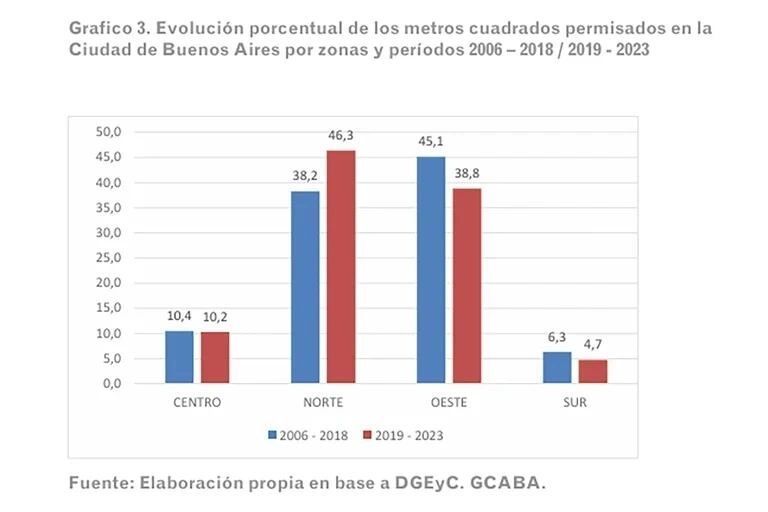
Source: Urban Fabric
Of these permits, 84% correspond to housing projects, and only 16% to other uses such as commerce, industry or facilities. In housing, the largest proportion is for multi-family homes, with 4,498 permits compared to 735 for single-family homes.
“Despite the housing shortage in the city, 3,308 buildings were approved in these five years, an average of 661 per year. These constructions add up to more than 8,000,000 m2, with an average of 2,500 m2 per building, which is equivalent to between 25 and 35 apartments per unit, adding between 15 and 25 thousand new units annually,” said Álvarez de Celis.
Of the 6,051 permits granted, only 291 correspond to the South, and of the 12,000,000 permits granted, only 600,000 m2 are from the southern municipalities. Of the total number of permits granted, only 4.8% of the permits and 4.7% of the surface area belong to the South. In terms of permits for new construction, only 191 of the 4,201 are from the South, which represents 4.5 percent. The square meters granted in this area are 438,000 m2.

Source: Urban Fabric
In the neighborhoods, the low investment is mostly located in Communes 4 and 8. 2.8% of new construction is located in Commune 4 and only 1.7% in Commune 8. In five years, in Commune 4 there were permits for 120 buildings, an average of 24 per year, while in Commune 8 there were 71 constructions, less than 15 per year.
In the Barracas neighbourhoods, 36 new construction permits were granted between 2019 and 2023, with an average of 7 per year. In La Boca there were 21 (4 per year), in Nueva Pompeya 31 and in Parque Patricios 57 (8 per year). In Barracas and La Boca, the average surface area is larger, 5,092 m2 and 3,357 m2 respectively, while in Nueva Pompeya and Parque Patricios it is around 1,900 m2.
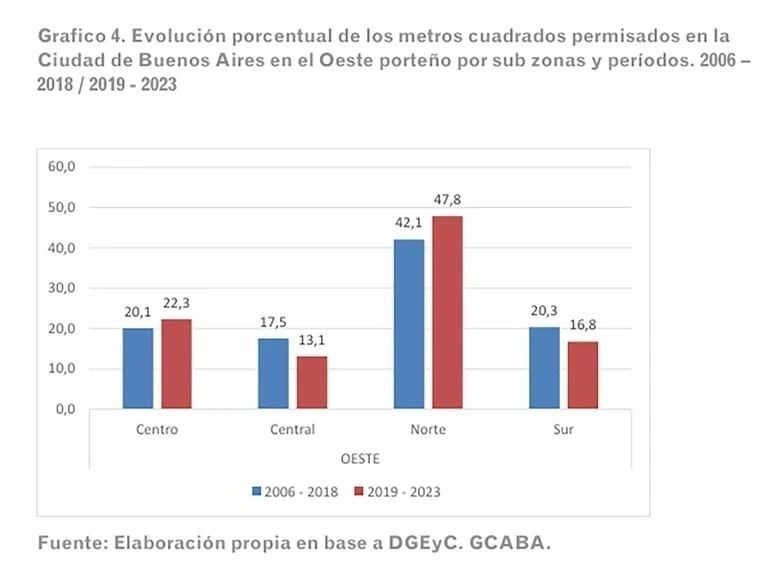
Source: Urban Fabric
In Commune 8, of the 71 new constructions registered between 2019 and 2023, the majority are located in Villa Lugano (44), followed by Villa Riachuelo (19) and Villa Soldati (8). In Villa Lugano, the average per building is 808 m2, in Villa Riachuelo 1,037 m2, and in Villa Soldati 3,914 m2 for each approved registration.
Álvarez de Celis said that the code sets urban guidelines and that, although in some areas of the north it restricted the construction capacity, it allows construction in large areas. Regulations such as the completion of the fabric or urban agreements have increased the construction capacity, which is taken advantage of by the builders.
He added that residential construction takes place where quality of life and urban infrastructure are desired. Public investment is necessary but not sufficient, suggesting incentives for the private sector, and mentioned a law from Uruguay as a model.
In Parque Patricios, where the Technology District is located, there was expansion and, post-pandemic, new works were promoted. In Villa del Parque, Floresta, Villa Devoto and Caballito, the construction of buildings in progress continues to be strong.
In order to increase the interest in building in the South, Álvarez de Celis concluded: “There should be a clear public strategy to develop this part of CABA, encouraging public-private initiatives to drive private investment. The direction of the Development Fund and the role of SME developers with incentives and areas of agglomeration economy are vital. The cleaning of the Riachuelo, with the construction of the Margen Izquierdo sewage relief system, will open opportunities for this area, requiring collaboration between the government and the private sector.”
www.buysellba.com

